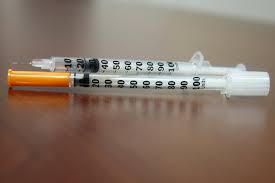- Home
- Editorial
- News
- Practice Guidelines
- Anesthesiology Guidelines
- Cancer Guidelines
- Cardiac Sciences Guidelines
- Critical Care Guidelines
- Dentistry Guidelines
- Dermatology Guidelines
- Diabetes and Endo Guidelines
- Diagnostics Guidelines
- ENT Guidelines
- Featured Practice Guidelines
- Gastroenterology Guidelines
- Geriatrics Guidelines
- Medicine Guidelines
- Nephrology Guidelines
- Neurosciences Guidelines
- Obs and Gynae Guidelines
- Ophthalmology Guidelines
- Orthopaedics Guidelines
- Paediatrics Guidelines
- Psychiatry Guidelines
- Pulmonology Guidelines
- Radiology Guidelines
- Surgery Guidelines
- Urology Guidelines
Pyridostigmine reverses pediatric complications of botox therapy

Physicians at the Medical University of South Carolina (MUSC) report the first pediatric use of a treatment to reverse complications from botulinum toxin therapy. Complications from botox treatment of muscle disorders were reversed when caught early, according to the findings of a study published online ahead of print by The Journal of Pediatrics on December 22, 2017.
In the study, physicians used a drug called pyridostigmine to treat one pediatric patient experiencing immediate complications from botulinum toxin therapy and another with delayed complications in distant muscles. In both cases, physicians recognized complications early and treated patients with the maximum dose of pyridostigmine appropriate for their weight.
Botulinum toxin is not just a cosmetic treatment for wrinkles. It blocks the nerves that control muscle tone, causing muscles to relax, making it a useful tool for neurologists and otolaryngologists who treat a group of nerve disorders called dystonias -- problems with muscle tone -- that affect the head and neck. For example, it can reduce hypersalivation, spasms in the larynx and the muscle spasms of cerebral palsy.
Yet rare but serious complications to botulinum toxin treatment can occur. When botulinum toxin is injected into a muscle, it can sometimes travel backward up nerves and cause unintended paralysis of nearby or distant muscles. In those cases, a drug called pyridostigmine can reverse the paralysis by encouraging muscles to contract.
The official antidote to botulinum toxin is difficult to procure quickly and takes several days to work, while pyridostigmine begins to relieve symptoms within hours. Early treatment is critical for patients who experience complications from botulinum toxin therapy, because symptoms can progress to difficulty swallowing or breathing, according to Lucinda A. Halstead, M.D., an associate professor in the MUSC Department of Otolaryngology and senior author on the study.
"We see a profound effect in people who can't swallow. We give pyridostigmine and the effect is within hours," said Halstead. "Patients are eating again within days."
In the first case, physicians treated a one-year-old female patient having difficulty swallowing. The patient had a history of aspiration pneumonia, wherein food or saliva is inhaled into the lungs rather than passing into the esophagus, and she was dependent on a gastrostomy tube implanted in her abdomen for nutrition. During swallowing, one set of muscles called the pharyngeal constrictors must contract to push food toward the esophagus while another muscle called the cricopharyngeus must simultaneously relax for food to pass into the esophagus. Physicians observed a poorly relaxing cricopharyngeus and injected the muscle with botulinum toxin to force it to relax so the patient could keep food down.
The next day, however, the patient was admitted to the hospital with choking, vomiting and difficulty breathing. A swallow study revealed that her cricopharyngeus had indeed relaxed, as intended, but that the pharyngeal constrictors that must contract to push food toward the esophagus had also relaxed. As a result, she was nearly unable to swallow.
The patient was given pyridostigmine through her gastrostomy tube to oppose the effects of botulinum toxin, with the idea that the toxin had spread unintentionally to her neighboring pharyngeal constrictors, causing them to relax. Two days later, the patient was breathing normally, and she was released on day thirteen after admission. One month later, she had no signs of aspiration and continued to improve. Her gastrostomy tube was removed six months later.
In the second case, an eight year-old female patient was given an injection of botulinum toxin into her salivary glands to treat excessive salivation. She had displayed an excellent response to the same treatment six months earlier. Seven days after the injection, however, she returned to the hospital, unable to eat or drink without choking. A swallow study showed that her pharynx was not completely clearing itself of food during swallowing. The patient was given oral pyridostigmine and began to rapidly improve. Within a week, she was eating normally again.
This is the first report of physicians treating complications from botulinum toxin therapy with pyridostigmine in pediatric patients. Pyridostigmine is a widely available medication for myasthenia gravis, a disorder that causes muscle weakness. It is safe, but it can cause slowing heart rate in patients with a history of heart problems. It is not an antidote to botulinum toxin, but it does oppose its effects by preventing the breakdown of acetylcholine, which is needed for muscle contraction. In both patients, the drug was given in doses similar to those used to treat myasthenia gravis.
This study emphasizes the need for physicians to be alert to complications from botulinum toxin therapy in children and adults, recognizing that such problems might not arise immediately and can appear in muscles distant from the injection site. This recognition is critical in patients who have difficulty swallowing or breathing.
"When a patient has had too much botulinum toxin, there is a point when symptom management strategies are no longer beneficial to the patient," said Halstead. "Pyridostigmine is an active intervention to modulate the effects of botulinum toxin therapy."

Disclaimer: This site is primarily intended for healthcare professionals. Any content/information on this website does not replace the advice of medical and/or health professionals and should not be construed as medical/diagnostic advice/endorsement or prescription. Use of this site is subject to our terms of use, privacy policy, advertisement policy. © 2020 Minerva Medical Treatment Pvt Ltd